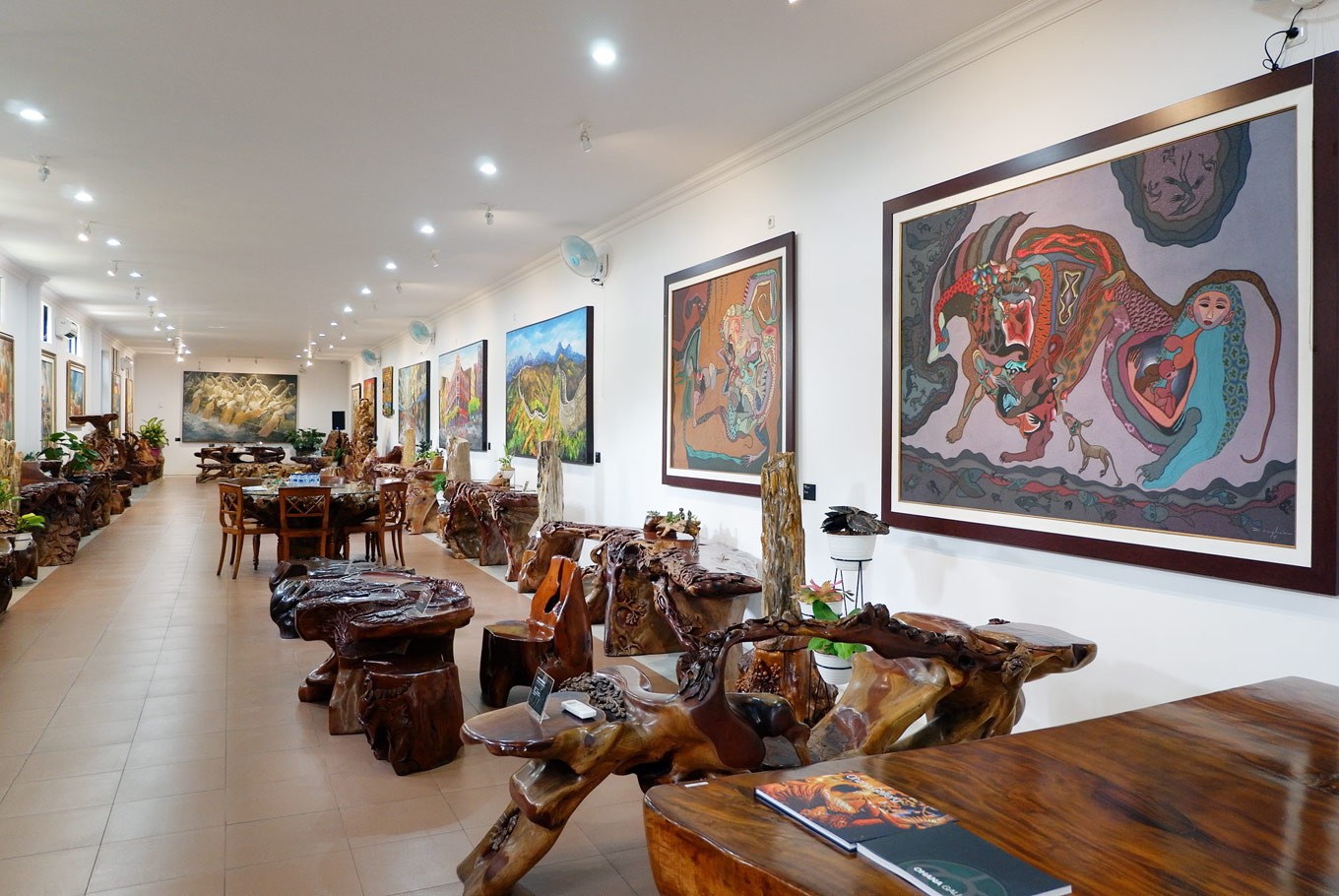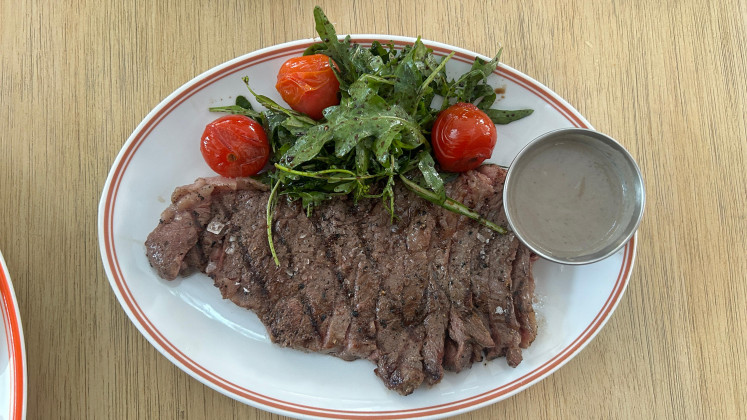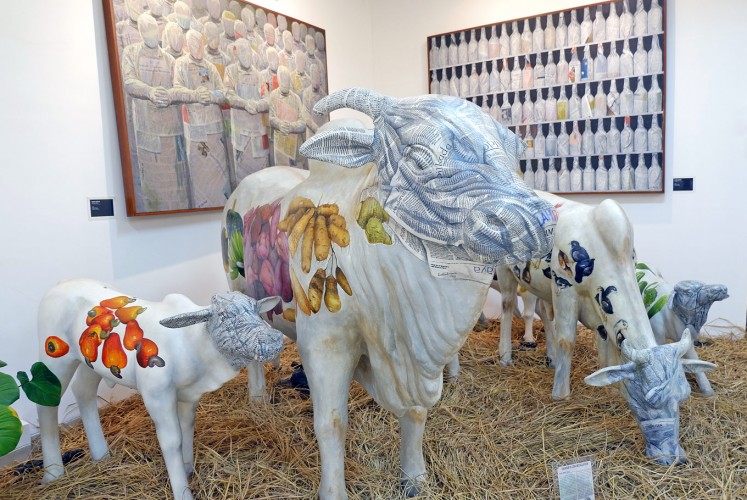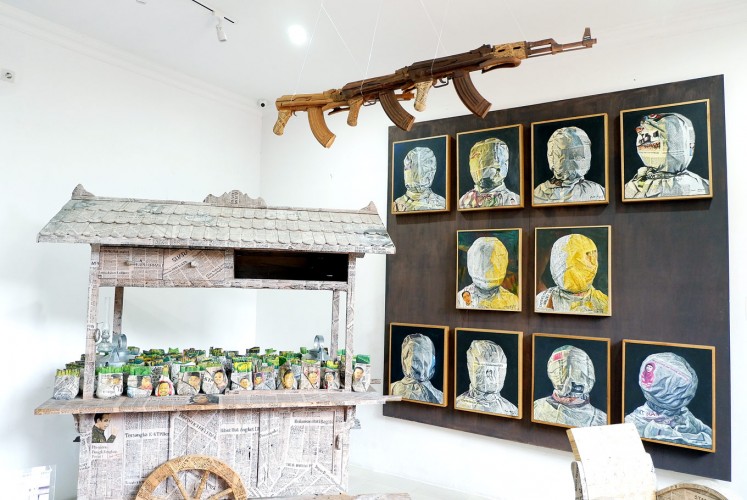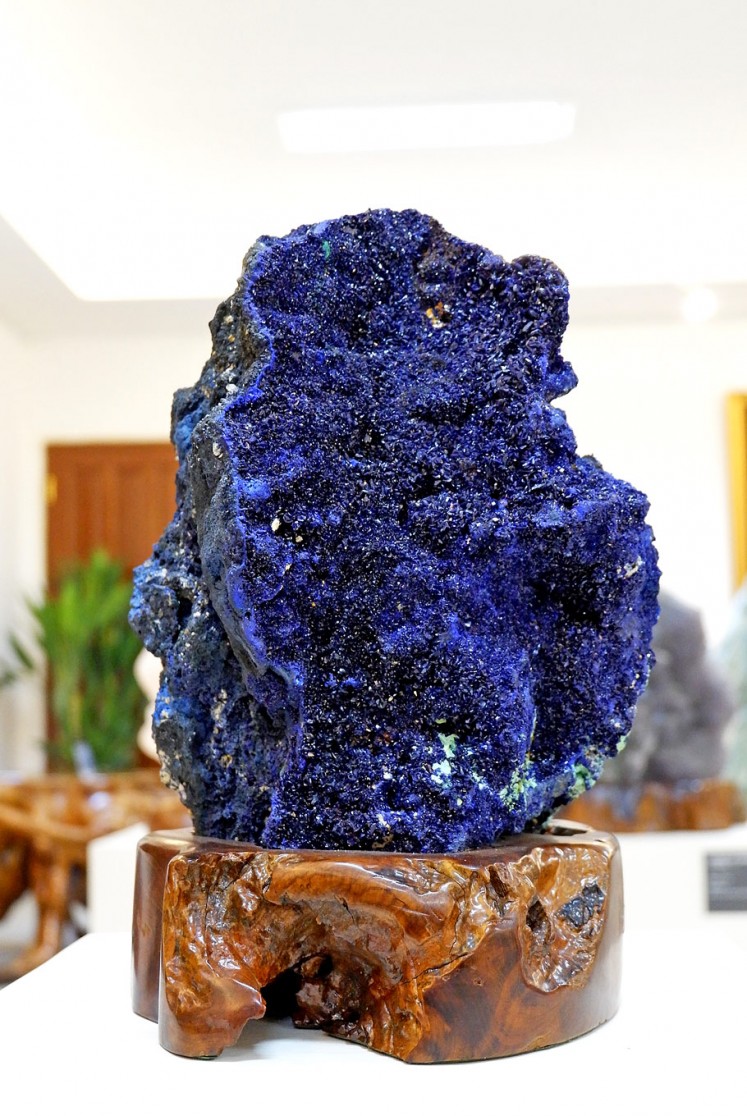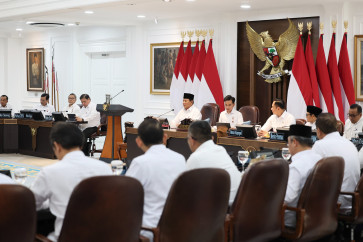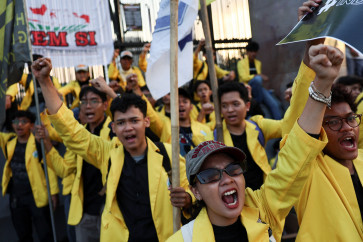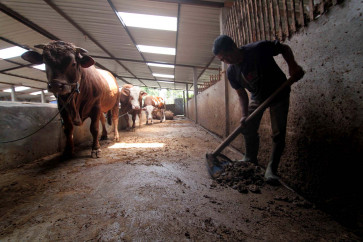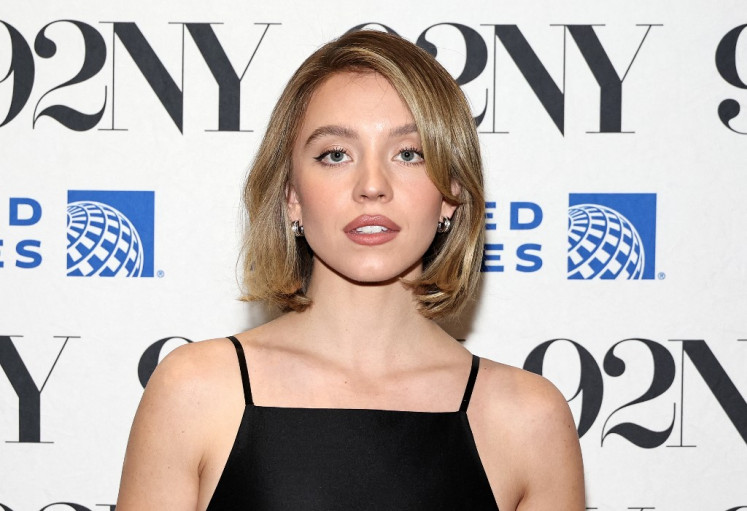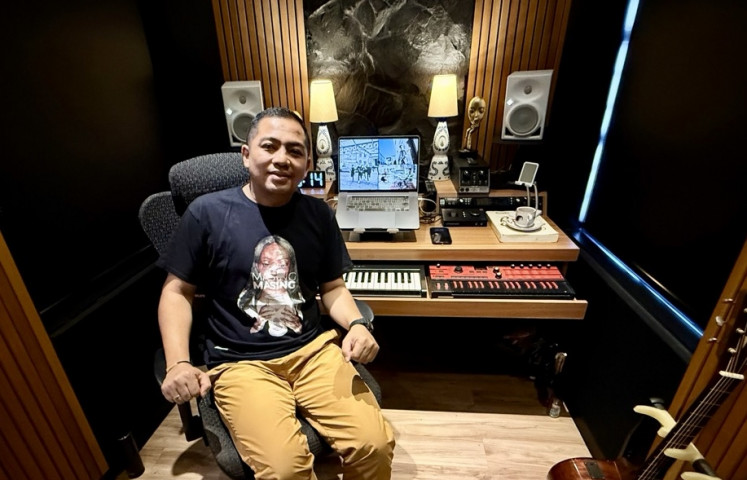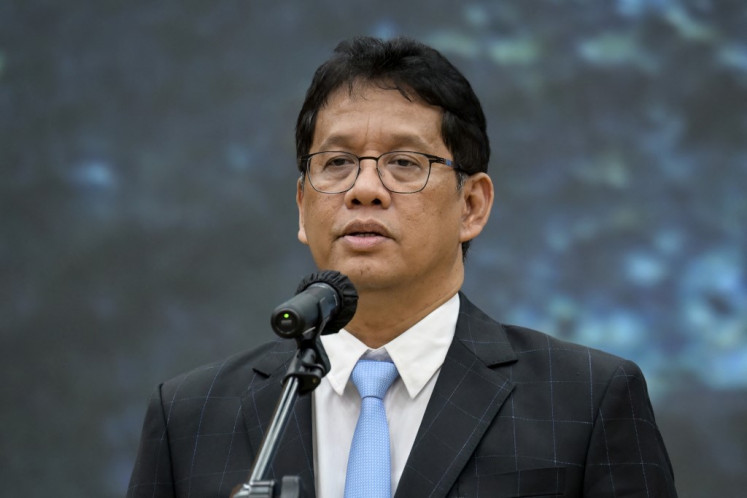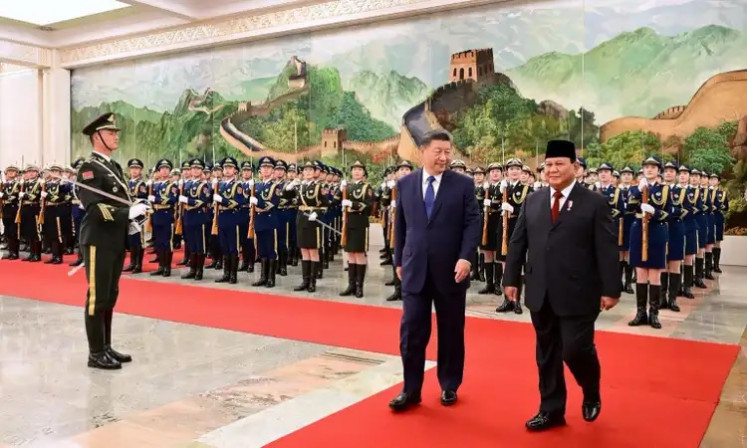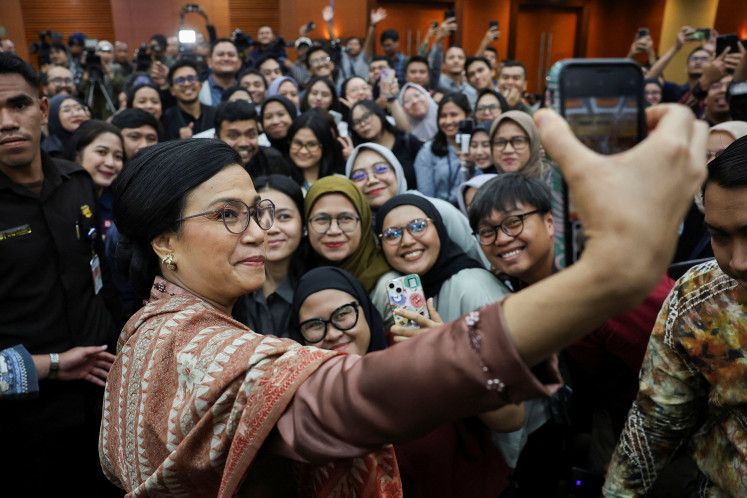Popular Reads
Top Results
Can't find what you're looking for?
View all search resultsPopular Reads
Top Results
Can't find what you're looking for?
View all search resultsOhana art gallery: A gem in rare space
A new gallery that has found a home in a busy industrial area of Tangerang.
Change text size
Gift Premium Articles
to Anyone
A
rt collector and businesswoman Telly Liando said some people thought she was crazy and reckless for opening the Ohana art gallery in such an unlikely area.
The gallery is nestled behind Telly’s optical fiber factory in the Jatake industrial area, surrounded by other factories, with many trucks passing by —an unusual spot when compared to the popular areas of Menteng or Kemang, which are home to many art galleries in the capital.
“The art world is different from my world. Interacting with artists can make me laugh freely, think out of the box and even forget my own world. Economic problems do not stop these artists from working. I have learned a lot from their world. Therefore, I have the courage to set up this gallery,” the 58-year-old said.
Now Ohana is home to works of Indonesia’s prominent artists, from Budi “Ubrux” Harsono to Nasirun.
During the exhibition marking the gallery’s opening, the showcase includes Ubrux’s cow sculptures that he had also displayed during his “Raja Kaya” (Rich King) exhibition at the Taman Budaya Yogyakarta cultural center in Yogyakarta in May last year.
Visitors were attracted by newspapers motifs on the cows’ heads and eye-catching drawings of colorful crops and fruits on their bodies.
Cow sculptures by Budi “Ubrux” Harsono (JP/A. Kurniawan Ulung)The work tells viewers about the traditional habit of Javanese people of placing their cattle in front of their houses in the past as a symbol of social status — the more cattle they had, the more respected they would be.
Another installation by Ubrux in Ohana is Angkringan (Street Food Cart), which the National Gallery had displayed in August last year.
The artwork comprises a cart and rice meals wrapped in newspapers, known as nasi bungkus, which symbolizes the habit of poor and middle-class people to spend time in angkringan, enjoying a meal and coffee while discussing political issues they know about from newspapers.
Near the installation, the gallery displays paintings by Ubrux and other artists, from Bayu Wardhana and Erica Wahyuni to Lucia Hartini and Nasirun.
Angkringan (street food cart) by Budi “Ubrux” Harsono (JP/A. Kurniawan Ulung)Curated by cultural observer and author Sindhunata, the artworks in Ohana are owned by Telly.
The businesswoman from Koha village in Manado in North Sulawesi said her love of art came from her grandfather, a wood craftsman.
“Art gives me passion that can motivate me, especially in moments when I am down. That is the value that I learn from my artist friends,” said Telly, who has a collection of some 200 paintings.
Despite its location in the busy industrial area, Ohana’s compound has a relaxing atmosphere, largely because of the green scenery with flowers all around. On the grass, sculptures depicting Buddha and punakawan, the clown servants in Javanese shadow puppets, extend the gallery beyond the confines of its building.
Ohana, which means “kinship” in the Hawaiian language, is open for the public and free of charge, but visitors have to reserve first. The gallery is set up in a two-floor wooden house of Manadonese tradition.
The mother of two began to fall in love with natural stones in 1985 after finding a stone sculpture of Jilaihud, a happy Buddha that Chinese people believe will give them luck and happiness, in Hong Kong.
She has collected around 500 natural stones, including galena, lapis azurite and crystal. For her, they embody a beauty humans are unable to replicate.
“This is not just a gallery, but a museum of beautiful natural stones as well,” said the curator, Sindhunata.
Lapis azurite (JP/A. Kurniawan Ulung)In 1988, Telly began to collect paintings. “I collect paintings not because I have much money. In difficult financial circumstances I have always had the courage to buy a painting if I like it,” she said.
Telly does not stop and buying paintings but also makes friends with their creators, including on-the-spot painter Bayu Wardhana from Yogyakarta.
Ohana gallery CEO Stephanie Oesman, Telly’s daughter, said the gallery’s first consideration in buying an artwork was its story.
Stephanie is confident Ohana will color the country’s art scene even though many had told her and her mother that establishing an art gallery in such a remote spot as Jatake was a crazy and reckless move. “Let’s just appreciate art together,” she said.

